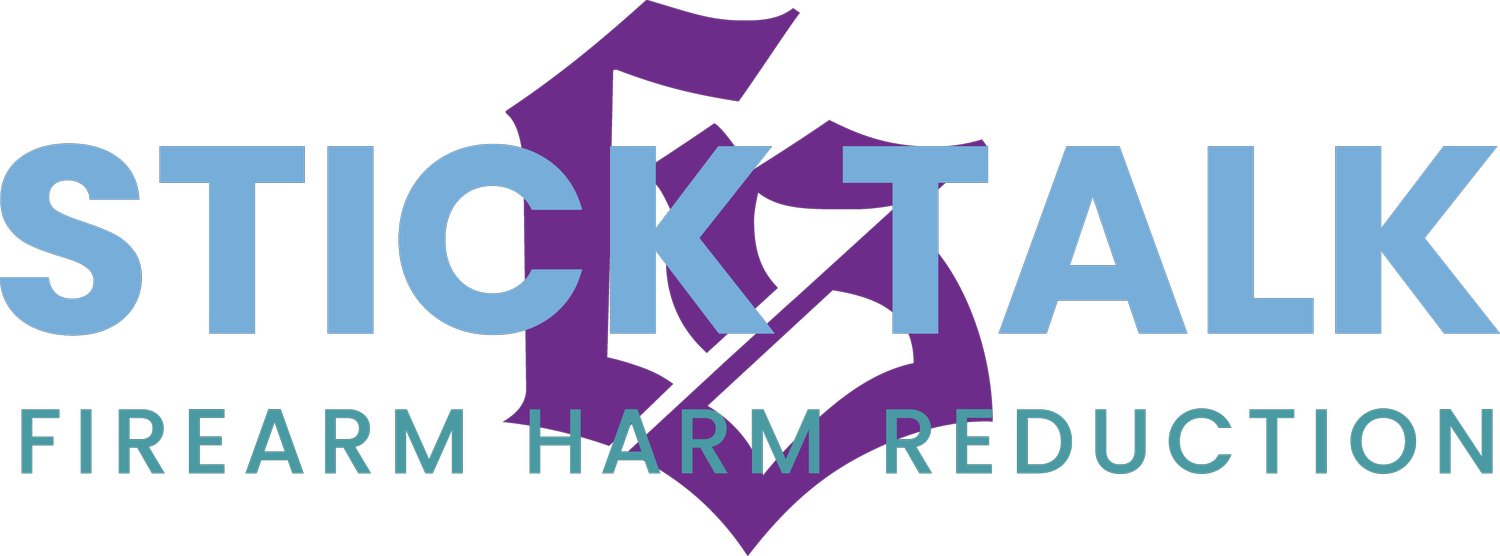
FIREARM HARM REDUCTION
a community safety strategy co-created by young Black and Brown people who are both authors and survivors of gun-related harms
“The solution isn't `don't carry a gun.' It's `if you are gonna carry, here's education on how to be safer.' Not encouraging us to carry, but teaching us safety.”
All quotes are from young people who are gun violence survivors and who routinely carry firearms for protection.

9 PRINCIPLES OF
FIREARM HARM REDUCTION
Build on the lived experiences, leadership, and imagination of those who are in the trenches, at extreme risk of lethal violence.
“I don't want to carry it, but I love my life so I got to carry it.”
“Both sides of the gun,
I done dealt and felt the pain.”

Respond to Black and Brown communities’ trauma around guns with the same empathy that is usually reserved for white people who use opioids.
“A lot of people don't understand what we been through. It's like every time I get close to someone, they end up dying.”
“We been getting shot at, our homies been getting killed in the streets all around us. We all got trauma around guns.”

Carrying a gun for protection is a reasonable response to the system’s refusal to keep us safe.
“I ain’t carrying to commit crimes. I’m carrying for safety and protection.”
“I don't feel comfortable unless I have a weapon on me.”
“We live in a place where we all strapped.”

Among young people who grow up constantly exposed to community and police violence, illicit firearm use and illicit opioid use coexist and interact.
“Smoking makes me feel smooth, oxys help numb the pain.”
“It's hard not to depend on substances when you're in a warzone.”

In neighborhoods where everybody got guns, both the War on Guns and abstinence-based responses are failing to improve community safety.
“All them messages telling us to `put the guns down' and `say no to guns' are getting us nowhere.”
“A lotta people today talking about peace, but there’s bodies behind this – it’s hard to make peace.”

Essential to the work of preventing the premature deaths of young Black and Brown people is reducing their exposure to the police.
“We can't trust the police that are in our communities. No one is going to call the police.”
“The only way to diminish police violence is to reduce contact between the public and the police.”
--Mariame Kaba
“We ain’t never believe in the police – they was shooting us.”

We lay claim to educational tools and strategies for healing, safety, and collective care that are relevant and responsive to our survival needs.
“We trying to make knowledge about guns accessible so you know what you capable of, and know the power and responsibility we have with guns.”
“Stick Talk teaches us practical skills and education we actually need to survive out here, like when we got trained in emergency first response for what to do if someone gets shot.”

We mobilize neighborhood-based responses to gun-related harms by making places where firearm use is not demonized.
“Once guns is less taboo, people will be a lot more safer about it.”
“We need decriminalized spaces where we can talk about these issues safely and come to terms with the guns in our reality.”

We de-police and de-professionalize community safety and wellness.



















